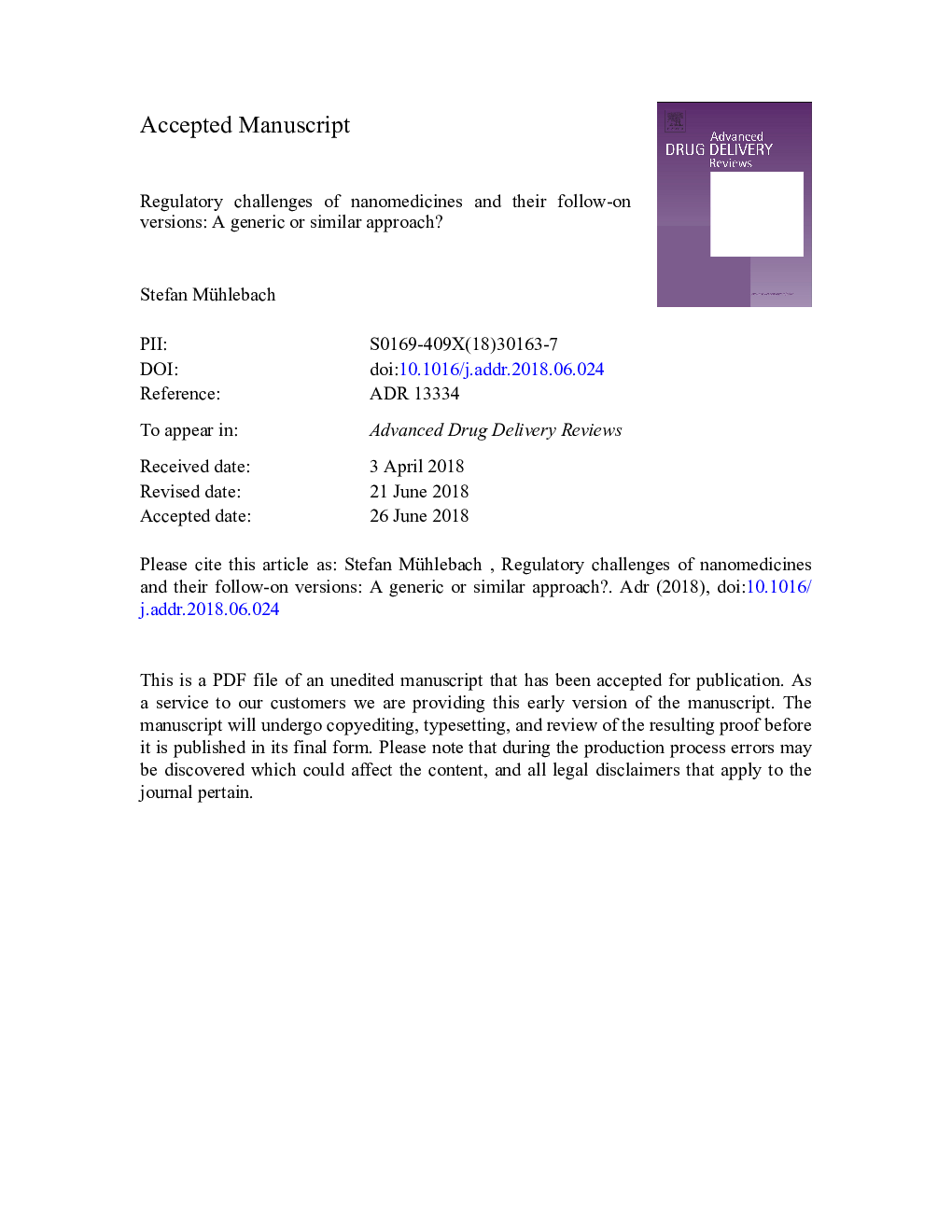| Article ID | Journal | Published Year | Pages | File Type |
|---|---|---|---|---|
| 10157339 | Advanced Drug Delivery Reviews | 2018 | 29 Pages |
Abstract
Nanomedicines and follow-on versions (also called nanosimilars in the EU) have been on the market partially for decades although without recognition of their nano properties in the beginning; a substantial number is in clinical development. Nanomedicines are typically synthetic and belong to the non-biological complex drugs. They show a high variability in form, structure, and size. Additionally large molecule biologics show nano-characteristics meaning nano-dimension in size (1-100â¯nm) or specific properties related to these dimensions. The high complexity of nanomedicines with their heterogeneous structures do not allow a full physicochemical quality characterization, challenging the regulatory evaluation especially for follow-on versions upon comparison with the reference product. The generic paradigm with the sameness approach for quality and bioequivalence in blood plasma is not appropriate for nanomedicines where a similar approach is needed. After experiencing non-equivalence of authorized parenteral colloidal iron follow-on versions, EMA and FDA issued reflection papers and draft guidances for industry to present their current thinking on the evaluation of such complex products. A stepwise approach to evaluate the extent of similarity, from quality, including critical quality attributes (CQA) and assessment of nano properties, to a non-clinical biodistribution assay, required in the the EU but not in the US, and to clinical evaluation makes sense. The cumulated totality of evidence for the authorization of nanomedicine follow-on versions goes case-by-case. Interchangeability, or substitutability, is a challenge. However, a defined or even harmonized approval pathway for these follow-versions is still missing and causes potential differences in approval. To progress, a science-based discussion platform among stakeholders and experts in the field is necessary. An agenda has been agreed [5], namely CQA assessment, publication of scientific and clinical findings, consensus on nomenclature and labelling, and regulatory actions on substandard complex drug products. Consensus created in a public private approach will support progress towards a defined and harmonized regulatory pathway for nanomedicines and their follow-on versions. This will provide drug innovation but also larger access to follow-on versions of nanomedicines, both a benefit for the patient.
Keywords
Related Topics
Life Sciences
Biochemistry, Genetics and Molecular Biology
Biotechnology
Authors
Stefan Mühlebach,
